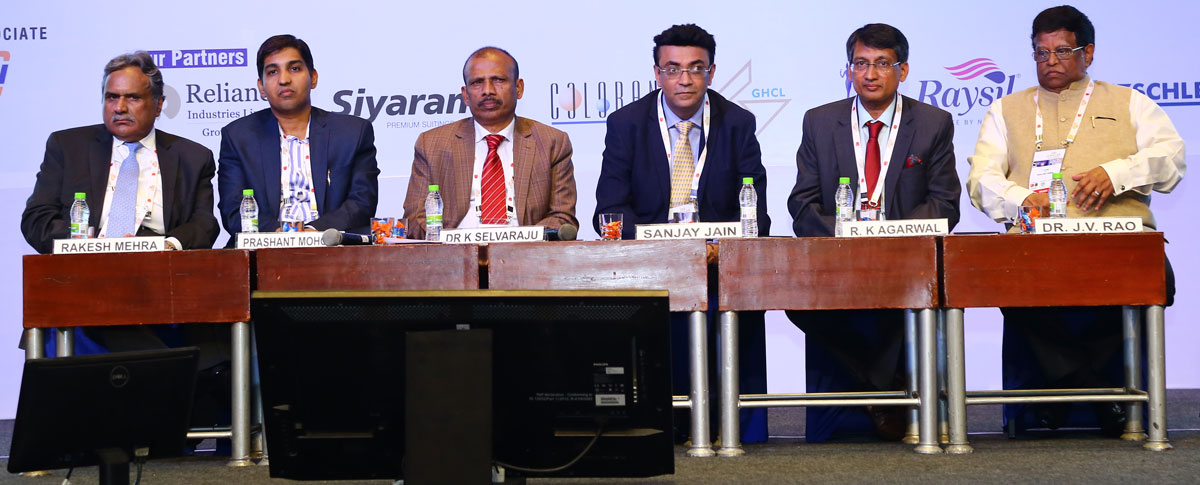Global contents also translated in Chinese
KAKATIYA TEXTILE PARK | FELICITATION | INAUGURAL | SESSION-1 | SESSION-2 | SESSION-3 | SESSION-4 | TESTIMONIALS
SESSION-1
Micro-level change, value additions and skill development imperative for textile growth in India
The first session of the conference, Strategic Outlook: Challenges faced by Indian textile and possible solutions, chaired by Sanjay Jain, Chairman, CITI, sought practical solutions for the challenges faced by the textile industry today. It urged the leaders to bring about a change on a micro level. “Today change is not just a constant, but also a compulsion,” said Jain. “It has to be in the organisation’s DNA,” he added.
The session also deliberated on which of the two; cotton or manmade fibers are likely to rule the industry in future. Taking a neutral stance on the issue, Rakesh Mehra, Company Director, Banswara Syntex said. ”Fibres liked by consumers will dominate the industry. He emphasised the importance of value additions. “The ministry has set a target of $350 billion. f we want to achieve this kind of growth, we need to talk about value additions,” he said. “Smaller countries have raced ahead of us. Our share of garments and fabrics is so low that they are the weakest links in the entire value chain. We therefore need to think on ways to increase the share of value added products in the given resources,” he added
DK Selvaraju, Secretary General, SIMA revealed that his company is converting large number of weaving and processing units for the value addition. “We have been closely working with Grasim since the last two years. We got converted 25 to 30000 looms into viscose manufacturing in the region. The only issue remains that of transparency and consistency in pricing for which we are trying to find out a solution,” he said
Another hot topic of discussion was that of skill development. Dr. JV Rao, CEO, Textile Sector Skill Council, said, “The aspect of skilling has not been really worked out well. Today we have accepted the training cost also as a part of the production cost. The focus is the attrition rate and how to address it. If a person who works in mill A joins mill B, it does not mean he is out of the system. It’s just that he hasn’t been trained according to the demands of the mill A. Our certification system effectively addresses this issue and trains our employees to work in all environments,” he added

 Sanaj Jain, Chairman, CITI Sanaj Jain, Chairman, CITI |
 Dr. J.V Rao, CEO, TSC Dr. J.V Rao, CEO, TSC |
 Dr. K Selvaraju, Secy General, SIMA Dr. K Selvaraju, Secy General, SIMA |
| Download | Download | Download |
 R K Agarwal, Chairman, Telangana Spinner Assoc R K Agarwal, Chairman, Telangana Spinner Assoc |
 Rakesh Mehra, Director, Banswara Syntex Ltd Rakesh Mehra, Director, Banswara Syntex Ltd |
 Prashant Mohota, MD, Gimatex Ind Pvt Ltd Prashant Mohota, MD, Gimatex Ind Pvt Ltd |
| Download | Download | Download |


